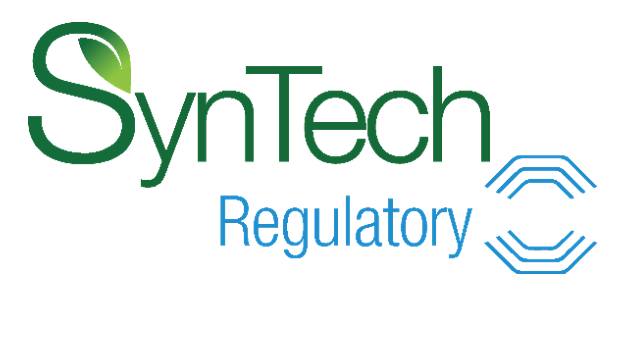How India’s Agrochemical Industry Is Proving Its Resiliency
India’s agrochemical manufacturers have made huge strides in recent years, pressed further by the Trump Tariffs to catch up to their Chinese competitors — only for supply chains and logistics to be plunged into chaos by COVID-19.
What’s most impressive, perhaps, is the country’s ability to not only to power through all the challenges thrown its way over the past two years, but to go beyond the call to improve its industry and serve the needs of farmers throughout a changed world.
Steadily, Indian agchem has been coming back from the sub-half-capacity levels seen during the pandemic’s second wave that devastated the country in early 2021, and its labor force has been returning, too. Still, production as of late-August is not yet where it was two years ago.
Erratic raw material supplies out of China trigger a chain reaction in India, where many if not most agrochemical manufacturers rely on the country’s behemoth, largely automated industry for at least one intermediate for synthesis. That chain reaction ripples all the way down to importing countries like the U.S.
Just one example: The starting intermediate for lambda and bifenthrin – MPBD – is typically sent from India to China, where it’s produced into lambda acid and bifenthrin alcohol, Then it’s shipped back to India to complete yet another step. The logistics complexity, along with container delays have made for a bumpy process.
Then, environmental inspections in China kicked back into high gear as the Communist Party’s Centennial celebration commenced in July, shutting down key intermediate plants and causing temporary shortages of these very products in China, says Shannon Russell, Executive Vice President, Product and Business Development at Atticus LLC, a fast riser in the U.S. generics business out of Cary, North Carolina.
When Atticus launched in 2014, its diversification strategy led Russell and his sourcing team to India and other countries outside China, Russell says, to shore up its position and reputation as a reliable supplier.
“Our industry was faced with environmental shutdowns, and Atticus further diversified more (sourcing) to India in order to remain reliable. With the Trump Tariffs continued to move more to India. There have been compounding events that have forced us to move more and more products to India, where it makes sense,” he explains.
Which country has the edge on reliability today? “Both countries have had their struggles,” he says. “Container availability out of India is probably a little bit worse than China, but both are poor. We are now faced with the situation where a manufacturer might have a finished product sitting on the floor in either country, but you can’t ship it in a reasonable amount of time. That is affecting every company here in the U.S..
Yet, the overarching progression of India’s agrochemical industry remains on track, albeit moving along at a slower pace than China’s. India, Russell points out, has not benefited from the steady government financial support its chief competitor has enjoyed.
“You see the will and the need to be more efficient in manufacturing processes, and with further back-integration. You see that already happening,” Russell says. “How fast that can happen will be the biggest question mark.”
Jayesh Mohan Dama, Managing Director at Hemani Industries Ltd., based in Mumbai, agrees that shipping is the largest factor impacting both the upstream and downstream supply chains, and the situation has deteriorated worldwide as of late-August 2021.
“The situation is slowly becoming dire as not only have freight costs jumped two or three times higher than normal, but it is still difficult to get containers shipped due to demand far outstripping supply,” he tells AgriBusiness Global™.
Dama believes the situation will remain difficult until at least March 2022 for both India and China, and he cautions that the 2022 Winter Olympics in Beijing could signal another problematic period if China restricts hazardous cargo movements. “It remains to be seen what impact that will bring about in the supply chain.”
“Passing the freight increases to the customers, even for the regular business has been difficult,” says Bimal Shah, director at Mumbai-based Sulphur Mills Ltd.
“The good part is that there is an understanding at a global level of the situation, to which most of our clients have acknowledged. We have been trying to strike a balance in this tight rope by sharing part of the cost increases with our clients,” he adds.
Atul Churiwal, managing director at Krishi Rasayan Exports Pvt. Ltd., describes an extremely slow period due to clearance at ports from April to June of this year; however, business began normalizing in early summer.
Nevertheless, Growth
For Hemani, it took on a major challenge by continuing with its expansion plans mid-pandemic – new plant construction got underway last year. The two new plants producing metribuzin and prosulfocarb were completed in 2021, and it expanded its meta phenoxy benzaldehyde (MPBD) plant to boost output to 12,000 MT of that pyrethroid intermediate. It also expanded capacity of herbicides dicamba and metamitron, in addition to the insecticide alpha-cypermethrin.
A key pyrethroid manufacturer, Hemani began production of deltamethrin in 2019 and will finish expansion of that plant by the end of this year, on top of its 2020 launches of lambda-cyhalothrin and bifenthrin. “We will also be adding a couple of exciting new products to our portfolio next year,” Dama says.
Sulphur Mills had also been actively expanding pre-pandemic for manufacturing of intermediates, active ingredients, and formulations, including both backward and forward integration, Shah notes. “Some projects were delayed in execution due to the pandemic, but we feel we should be back on track this year and will continue our expansion plans as we see a large growth potential in our prioritized segments and areas that fit our business model of value-added formulation and solutions.”
India, Shah says, is in an interesting phase of progression in agrochemicals with overall production as well as exports trending upward despite the challenges that COVID brought last year. He has witnessed increased interest as an agchem manufacturer from most of the international companies, as they have looked to de-risk supplies in light of the massive disruptions that happened in China.
“The domestic industry is expected to grow at a compound annual growth rate of between 8% to 10% in next five years to reach an estimated 36,000 Cr. Sulphur Mills has been climbing the charts consistently and is among the top-10 Indian companies with a major market share,” he says. “With our upcoming products as well as our recently launched innovative farmer solutions, we are looking at further strengthening our position in the domestic market.”
Churiwal, with Krishi Rasayan, says the most important lesson learned from doing business in the pandemic is that COVID is not going away anytime soon – and there will be more disruptions in manufacturing and supply. “We therefore have to plan in advance and keep extra buffer stock in our warehouses for future requirements and not work only on short-term goals.”
Krishi Rasayan, which is fielding an uptick in inquiries from both Eastern Europe and Latin America, is also looking at expansion: It is launching a technical plant in early September in Gujarat, with capacity of 7,000 tons. Initially, the plant will focus on the insecticides thiamethoxam and profenofos, and will later start herbicides like metribuzin, clodinafop, and others.
“We are also very bullish about the biostimulant market and focusing on this segment for growth,” Churiwal adds.
Meghmani Organics Limited, which is fully backward integrated, has been increasing production capacity, with plans to expand its portfolio with eight to 10 new off-patent products by early 2022, while ramping up its customer base worldwide, says Ankit Patel, CEO. It is also focused heavily on contract manufacturing with multinationals and other crop protection majors from around the world.
Based in India’s western industrial hub of Gujarat, Meghmani is targeting the Brazilian market in terms of registrations and product launches in the coming years. A subsidiary company is in place now in Brazil, Patel notes.
“In planning and forecasting, I expect we will see a lot of changes in the industry. We have seen lead times increasing,” says Patel. “I see the industry moving from zero inventory to minimal stocks level. Companies with backward integration will benefit greatly, as sourcing in such times becomes very difficult. Even stronger tie-ups with companies manufacturing ancillary products will be a game changer,” he adds.






